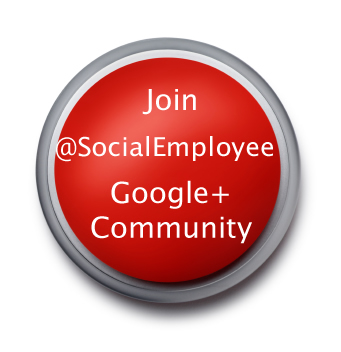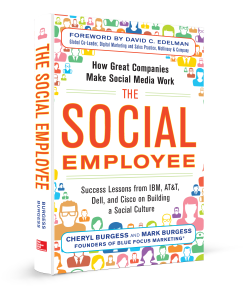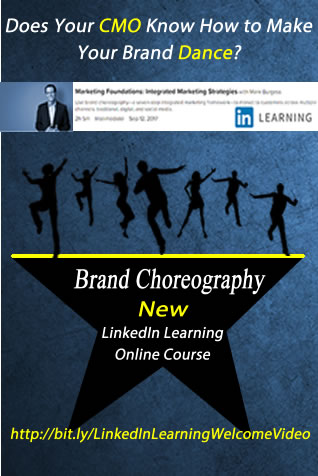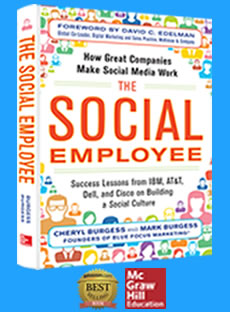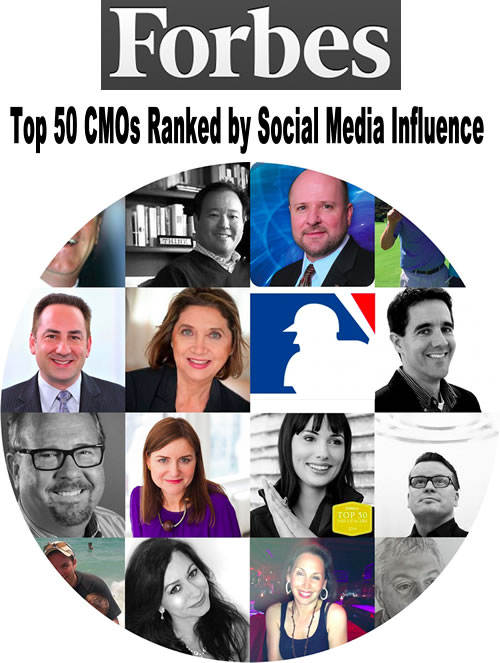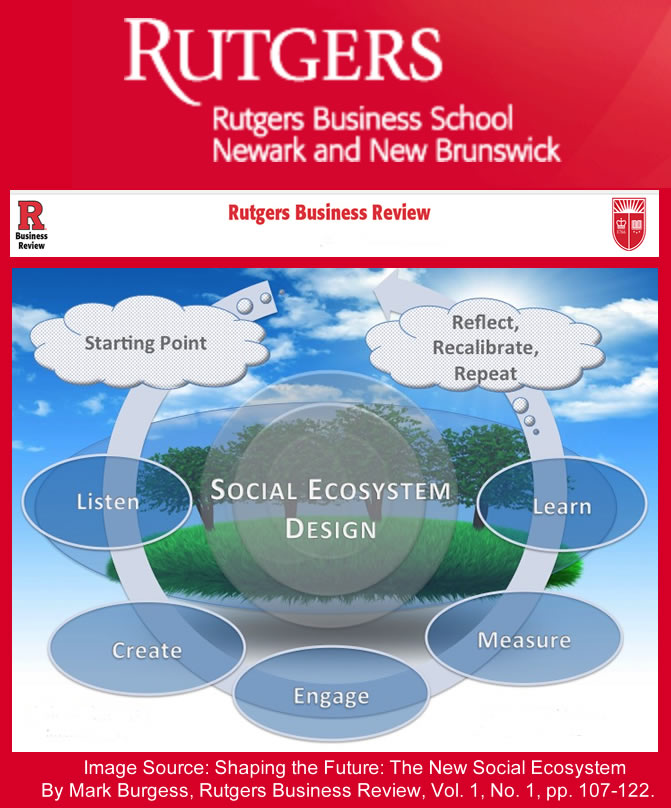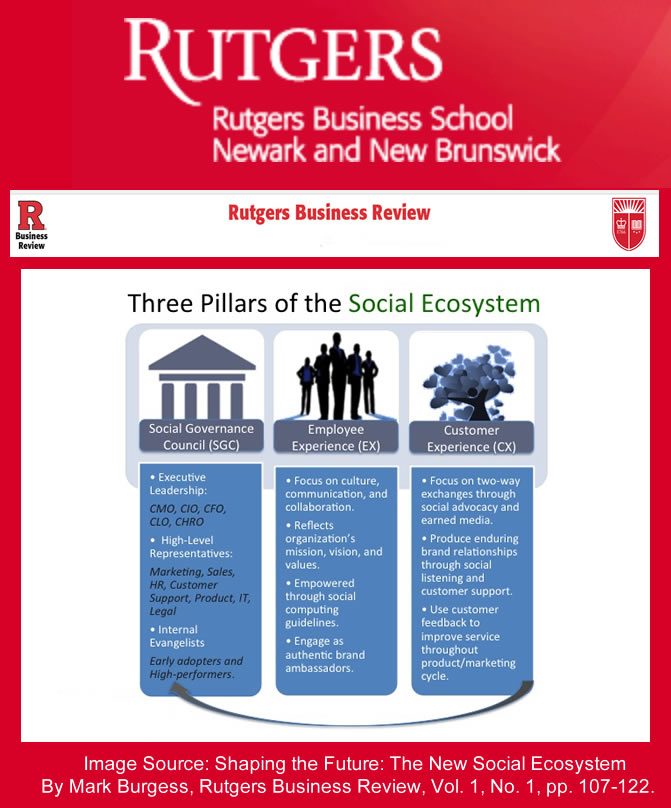 As part of our involvement in the seventh annual Social Business Forum (@SocialBizForum) in Milan, Blue Focus Marketing, President Mark Burgess (@mnburgess) and I were invited to contribute articles to a special attachment in the June, 2014 issue of the Harvard Business Review Italia (@HBRItalia). My article, titled “How the Social Executive Seizes Opportunity,” expands on the ideas in our best-selling book, The Social Employee (McGraw-Hill, 2013), presenting a statistical argument for the transformative power of social business leadership in the C-Suite.
As part of our involvement in the seventh annual Social Business Forum (@SocialBizForum) in Milan, Blue Focus Marketing, President Mark Burgess (@mnburgess) and I were invited to contribute articles to a special attachment in the June, 2014 issue of the Harvard Business Review Italia (@HBRItalia). My article, titled “How the Social Executive Seizes Opportunity,” expands on the ideas in our best-selling book, The Social Employee (McGraw-Hill, 2013), presenting a statistical argument for the transformative power of social business leadership in the C-Suite.
You can download the file, titled “#Social & Digital Transformation,” here, or you can view it in your browser here.
In the article, I take a look at stunning figures showing the low success rate of social business initiatives, linking it to executive leadership. The problem, at its root, is a lack of buy-in, a situation that stems not from the adoption of new tools, but rather from the failure of management and leadership to incorporate social business values into organizational culture. As I say in the article, “The why is everything, and the success of social business depends on executives to be champions of the why within their organization’s walls.”
In my research for the piece, I was fortunate enough to speak with Maria Winans (@MariaWinans), Vice President of Industry Cloud Solutions and Social Business Marketing at IBM (@IBM), who shared her thoughts on the responsibilities and considerations of the social leader, as well the effect C-Suite engagement has on employee culture. Here are a few highlights of hers from the article:
Our employees are watching us. They’re watching our moves. How do we communicate? How do we write? How do we engage? How do we humanize ourselves? It’s an important element of social business: it’s about bringing a human face to the market. It’s about bringing a human face to your employees as a leader.
[…]
I think we have an opportunity as executives to take this, lead by example, and inspire this trait across our employees. Leading by example is a way of embedding culture into our processes and daily duties as executives.
I was also able to pick the brain once again of David C. Edelman (@davidedelman), Partner and Global Co-Leader of Digital Marketing Strategy at McKinsey & Co., who had this to say about the value of social business leaders: (Page 37)
Executives need to be social to bring a human image to their brand. People are demanding transparency from the companies they deal with, and having the voice of a real executive in the conversation brings a critical human point of access.
[…]
Employees usually want their leaders out there building and defending the brand—kind of like generals out in battle with their troops—so they, as employees, can be proud of what they stand for.
Of course, no article (page 36) on social leaders could be complete without the wisdom of author and management guru, Tom Peters (@Tom_Peters). On the value of executives as drivers of social business Tom tweeted:
“Can you have a ‘social business’ if the CEO doesn’t play? I border on saying/believing, ‘No way’.
Social business transformation leadership insights and inspiration also came from John Hagel, (@jhagel) Cochairman at the Deloitte Center for the Edge (page 39):
[…]
“If executives want to stay ahead of the pack, they must find ways to harness social media to tap into the rich knowledge flows that these platforms generate. It’s no longer enough to go to meetings and conferences. The richest and most sustained knowledge flows are to be found in social media.”
Follow this link to read the full article, which also includes insights from business guru Tom Peters (@tom_peters) and John Hagel (@jhagel), Cochairman at the Deloitte Center for the Edge.
A special thank-you as well goes out to OpenKnowledge (@openknow) for organizing the publication of this content.
Below are recent endorsements for The Social Employee (McGraw-Hill, August 2013) by Tom Peters and David Aaker on their social networks, but if you want to see more of their endorsements click here.

In The Social Employee, we go behind the scenes with several leading brands—such as IBM, AT&T, Dell, Adobe, Southwest Airlines, Cisco, Acxiom, and Domo—pulling the lid off the inspiring social business success stories that have propelled these companies into the 21st century. These cutting-edge brands have all come to the same realization: the path to social business lies through empowering the social employee.
See what others are saying about The Social Employee and order your copy today!
Please check out @SocialEmployee media buzz! 
“Great brands have always started on the inside, but why are companies taking so long to leverage the great opportunities offered by internal social media? . . . The Social Employee lifts the lid on this potential and provides guidance for businesses everywhere.” —JEZ FRAMPTON, Global Chairman and CEO, Interbrand
 The Social Employee offers an unparalleled behind-the-scenes look at the social business success stories of some of the biggest brand names in the business world, including IBM, AT&T, Dell, Adobe, Southwest Airlines, Cisco, Acxiom, and Domo. These cutting-edge brands have all come to the same realization: the path to social business lies through empowering the social employee.
The Social Employee offers an unparalleled behind-the-scenes look at the social business success stories of some of the biggest brand names in the business world, including IBM, AT&T, Dell, Adobe, Southwest Airlines, Cisco, Acxiom, and Domo. These cutting-edge brands have all come to the same realization: the path to social business lies through empowering the social employee.
The brands that leverage their employee base in order to engage customers and prospects through social media are the ones destined to win the marketing wars. This book not only details the astronomical rise of the social employee, but also outlines the innovative methods that leading companies have employed to foster cultures of enthusiastic and engaged workers.
FOR EWORD by David C. Edelman, Global Co-Leader, Digital Marketing & Sales Practice, McKinsey & Company
EWORD by David C. Edelman, Global Co-Leader, Digital Marketing & Sales Practice, McKinsey & Company
AFTERWORD by Kevin Randall, Vice President of Brand Strategy & Research at
Movéo Integrated Branding, and journalist for The Economist and Fast Company
Download ~> Free Chapter 3 – “Brands Under Pressure”


